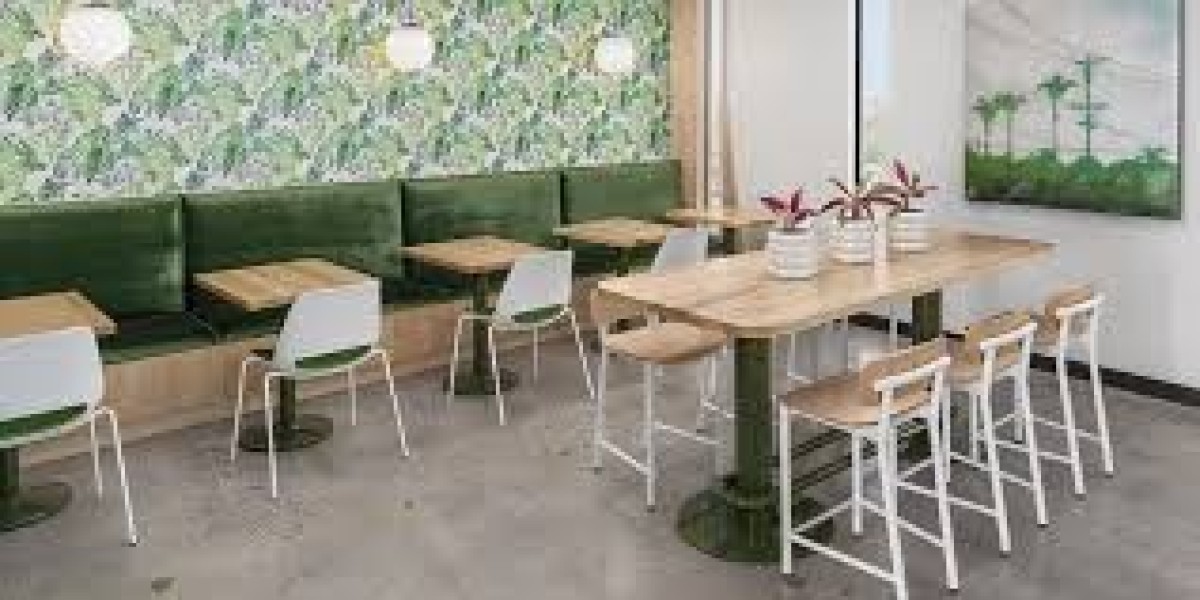Restaurant furniture has evolved significantly over the decades, reflecting changes in design trends, customer preferences, and technological advancements. From simple wooden chairs in the early 20th century to contemporary, ergonomic seating solutions, the transformation of restaurant furniture has been remarkable.
Today, restaurants prioritize both aesthetics and functionality to enhance the dining experience. This blog explores the evolution of restaurant furniture, highlighting the key shifts in materials, design, and usability.
The Early 20th Century: Simple and Functional
In the early 1900s, restaurant furniture was primarily wooden, focusing on durability rather than aesthetics. Chairs and tables were often handcrafted from solid wood, with little emphasis on comfort. Restaurants were more about providing basic food services rather than creating an ambiance for customers. The limited options for materials meant that most establishments had a uniform look, with heavy wooden chairs and rectangular tables dominating dining spaces.
The Mid-20th Century: Introduction of Metal and Upholstery
By the 1950s, the restaurant industry witnessed a design shift influenced by modernist movements. Diner-style furniture became popular, characterized by chrome accents, vinyl upholstery, and pastel-colored booths. This era marked the rise of themed restaurants, where furniture played a key role in defining the atmosphere. Furniture suppliers started to experiment with materials like stainless steel, aluminum, and molded plastic, making furniture more lightweight and affordable.
During this time, restaurant furniture suppliers began catering to the growing demand for stylish and comfortable seating. The rise of fast-food chains also influenced furniture trends, leading to the mass production of standardized seating solutions that were easy to clean and maintain.
The 1980s and 1990s: Comfort Meets Aesthetics
As dining out became more of a social experience rather than a necessity, restaurant owners focused on providing a cozy ambiance. Plush upholstery, padded chairs, and intricate woodwork became common in high-end restaurants. This period saw the emergence of bistro-style cafes and casual dining spaces, which introduced a mix of rustic and contemporary furniture designs.
The demand for outdoor Hotel Dining Table also increased during this time, leading to the rise of outdoor furniture manufacturers. Restaurants began investing in weather-resistant materials like wrought iron, teak, and synthetic wicker to furnish their patios and open-air spaces. This shift allowed customers to enjoy a more immersive dining experience beyond indoor settings.
The 2000s: Sustainability and Customization
With growing environmental awareness, the 2000s marked a shift toward sustainable and eco-friendly furniture. Restaurant owners started opting for reclaimed wood, bamboo, and recycled materials to minimize their carbon footprint. Customization also became a major trend, with furniture being designed to align with a restaurant's brand identity.
Hotel furniture suppliers played a crucial role in shaping the hospitality industry by offering luxurious and ergonomic furniture solutions. High-end restaurants and hotel dining areas focused on creating a refined and exclusive experience, leading to the popularity of designer furniture with bespoke craftsmanship.
The Present Era: Versatility and Smart Designs
Today, Restaurant Chairs is all about versatility, comfort, and technology integration. Modular seating arrangements, foldable tables, and multifunctional furniture have become essential, especially for small spaces. The rise of café culture has also increased the demand for unique and Instagram-worthy furniture, encouraging cafe furniture suppliers to create innovative and aesthetically pleasing designs.
Moreover, sustainability continues to be a major factor, with eco-conscious restaurants investing in furniture made from biodegradable and ethically sourced materials. Technology is also playing a role in furniture design, with features like charging ports, adjustable seating, and ergonomic enhancements becoming common in modern dining establishments.
The Future: What’s Next?
As customer expectations continue to evolve, the future of restaurant furniture will likely see further advancements in smart design, sustainable materials, and customizable solutions. The concept of flexible seating will gain more traction, allowing restaurants to adapt their layouts based on customer needs. With the increasing influence of minimalism, furniture designs will become sleeker, with a focus on maximizing space without compromising comfort.
Companies like Best of Exports are already leading the way in providing high-quality, trend-focused restaurant furniture that meets the demands of modern establishments. As the industry progresses, we can expect even more creative, functional, and sustainable furniture solutions that redefine the dining experience.
Conclusion
The evolution of Restaurant Furniture Suppliers reflects the changing dynamics of the food and hospitality industry. From traditional wooden chairs to contemporary modular seating, furniture design has continuously adapted to meet aesthetic and functional needs. With an emphasis on sustainability, versatility, and comfort, the future of restaurant furniture looks promising, ensuring that dining spaces remain inviting and innovative for years to come.


